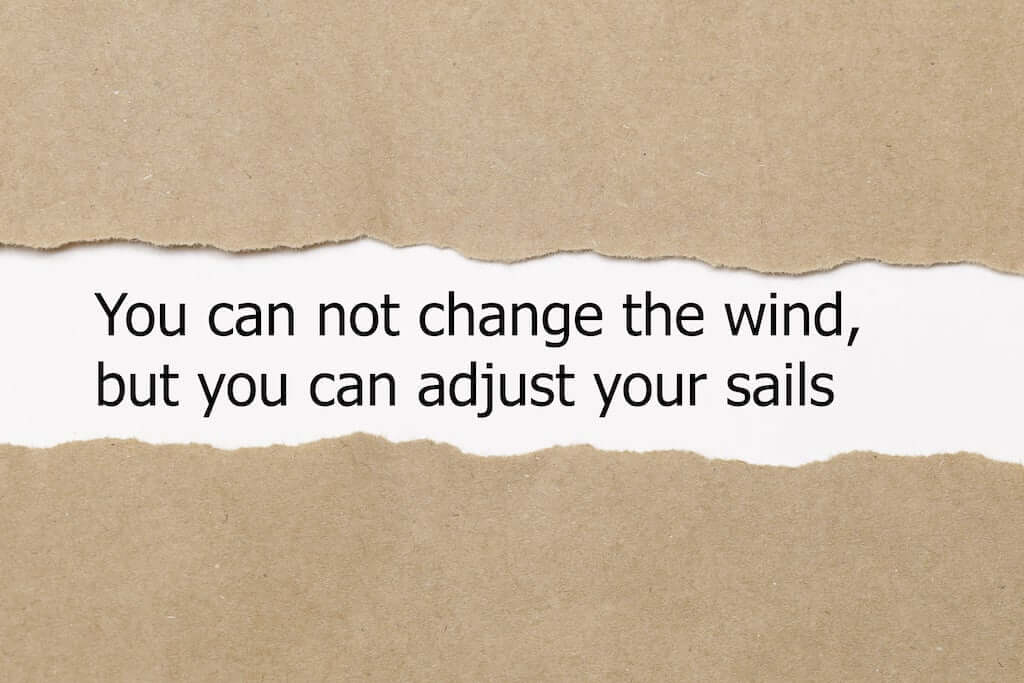Sustainable Caregiving Strategies
Strategy: Mindfulness
Mindfulness focuses our attention on the present moment. When we become skilled at being present, we counter the effects of stress and develop strong, permanent coping skills that will serve us well in the years beyond this caregiving experience.

The benefits are many when we:
- Observe our thoughts and emotions without letting ourselves get immersed in them, our responses become less impulsive, less reactive.
- Are nonjudgmental in our awareness, we are able to accept the experience with curiosity and openness.
- Improve self-reflection and self-observation, we develop and strengthen our coping skills. When we focus on the present, the stress that comes with ruminating on the past or future is minimized.
“Stress is caused by being here but wanting to be there or being in the present, but wanting to be in the future. It’s a split that tears you apart inside.”
Eckhart Tolle
Everyday Practice:
Cultivating mindfulness takes practice and consistency. Practice can be weaved into everyday life. There are opportunities throughout the day to refocus our attention on the present moment. Practicing during less stressful activities will help you develop the ability to remain present through the more challenging activities. Here are a few ways to incorporate mindfulness into your day to reduce anxiety and stress:
- In line at the check out counter – Take a deep breath and hold it for 5 seconds. Release the breath slowly. Do this a few times and feel the tension release from your body.
- At a traffic light – Keep a stone or small rock within reach and hold it at a red light, run your fingers over it. Alternatively, notice the feel of the steering wheel, the texture, the temperature. Is the seat firm or soft? Bring your attention to the physical.
- Looking out the window – What do you see? Look at each object as if you were seeing it for the first time. Notice the shapes, colors, movement. Practice increasing awareness without fixating on any one object.
- Walking – Perceive with all of your senses? How many things can you see, smell, hear, feel or taste?
- Eating – Notice the appearance of the texture, how it feels in your hand or on your tongue. Note the flavor and how different flavors interact with each other to create layers of flavor.
- Transitions between activities – Take the seconds between putting down your phone and picking up your coffee cup to bring awareness to the moment.
- Altercation – Be curious. It isn’t possible to be angry and interested at the same time. Become curious as to why your care recipient is acting in a certain way. Instead of reacting, ask them.
Curiosity:
Another opportunity to incorporate mindfulness is to observe a situation and watch it unfold with curiosity. Ben and Roz Zander are the authors of The Art of Possibility, and Ben shares a strategy that can help us experience the power of the pause. In between that moment of incident and reaction, observe and say to yourself, “How fascinating.” It offers an opportunity to not take ourselves so seriously. It gives us an instant to get out of our heads, get over ourselves and maybe even see some humor in the circumstances.
“Meditation is thus a form of centering, which involves our disengagement from the machine of our mind and our resting in the heart.“
Georg Feuerstein
Meditation:
Rani, a meditation coach, said that there is no correct or incorrect way to meditate, just better ways to meditate. Remove the pressure to be perfect and experiment with the many ways to disengage from the constant stream of thoughts that cause stress. You may find a connection with guided meditations, visualization, reflection or sound bath meditation. What all types have in common is sustaining the attention on one thing for an extended period of time.
Breathing:
Breathing exercises can offer a powerful transformation. A simple exercise that can help you feel calmer is to count to five on the inhale, hold for a count of five and exhale while counting to five. Repeated several times, this practice can work as well as a lullaby when you wake up in the middle of the night and the worries lurk like shadows in the dark. There are many different breathing exercises and there are links to examples in the Resources Guide for this lesson.
Mindfulness and boundaries:
Mindfulness can help us identify when the anger that we feel is due to a crossed boundary. This awareness gives us several opportunities to pause the story and rewrite it. For example, we can act rather than react which will minimize regret. We can respond in a way that reflects our values which may mean that we set or modify a boundary. When we reinforce the boundary with compassion we maintain the relationship. Mindfulness helps us determine when a boundary is not working, it may be too rigid or too flexible. Mindfulness helps us consistently reinforce boundaries which makes them more effective.
Healthy boundaries help prevent compassion fatigue which can lead to caregiver burnout. Compassion fatigue can occur when caregiver stress has gone so far that it affects our overall ability to feel compassion, not just for our care recipient, but for anyone, including ourselves. We could say that healthy boundaries are inspired by compassion; compassion for ourselves, compassion for our care recipient, and compassion for those who help us care for our care recipient. Compassion helps us reinforce our boundaries in a way that maintains relationships and in doing so, helps us maintain an overall sense of well-being. Boundaries help us protect our compassion reserves by establishing limits that prevent a build-up of resentment and anger.
Seamless Practice

Reflect:
- How does this quote resonate for you regarding caregiving?
“Most humans are never fully present in the now because unconsciously they believe that the next moment must be more important than this one. But then you miss your whole life, which is never not now.”
Eckhart Tolle
- Our power is in the present
Journal:
- Which mindfulness practices appeal to you?
- How can mindfulness and boundaries work together to create a less stressful caregiving experience for you?


Apply:
- Use the five senses to refocus attention on your surroundings. This is particularly powerful when combined with time in nature.
“Lose your mind and come to your senses.” ― Fritz Perls
- Incorporate a mindfulness practice a day. It may be a 10-minute meditation, using curiosity to pause the moment, a breathing exercise to calm the nerves or another strategy that allows you to experience stillness.
